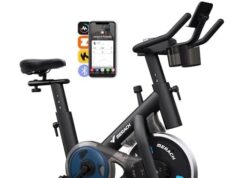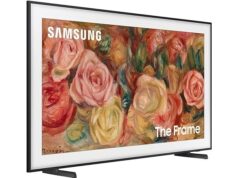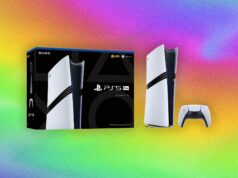
When you hear “Sony” and “gaming,” your brain probably goes to PlayStation. That’s for good reason, but a company as big as Sony is going to have its fingers in multiple pies. That’s where Inzone, its little known PC gaming accessories brand, comes in. Released in 2022, Sony’s tried to push it hard with esports partnerships, but everyone I’ve spoken to about Inzone products has just mistaken them for PS5 accessories. Maybe that’s why Inzone is getting a slick new redesign this year, starting with its gaming monitors.
These have all the features you’d expect from premium gaming displays, plus a few extra thrown in to justify those esports partnerships (and some pretty hefty price tags). There are two models, the M9 II and the M10S, and split across them you’ll find selling points including 480 fps and 4K. But to me, the real standout change here is the new look.
The PlayStation white is gone, as is the tripod stand and the heavily angled monitor arm that kind of looked like a mini-PS5. Instead, everything is now a much more neutral black, and more importantly, smaller and generally more convenient to use. That’s without losing any of the genuinely great adjustability the first generation of monitors had, but it does give the brand its own identity, which an Inzone representative told me was definitely intended.

Credit: Sony
The M9 II looks the most like the old model, as its arm is still at a slight angle, but its small circular base, 177 mm in size, now makes it much easier to move around or surround with equipment. It can also now rotate with little effort, while still tilting and moving up and down on its arm with the same convenient rail system (the latter isn’t exactly new, but in a closed-doors test, I found it requires much less force than similar rails from competing brands like MSI or Asus).
The M10S is even smaller, with a circular base that has just a 159 mm diameter. It has similar movement functionality to the M9 II, meaning it is light and easily maneuverable. Uniquely, it also has a heatsink built into its mount, allowing the panel itself to be thinner and reducing the risk of burn-in.
Having tried both behind closed doors, I was genuinely pretty impressed at how much I could configure each monitor, across pretty much any axis, with just a light push from a single hand. They don’t feel precarious, but this is as close to “thin and light” as I’ve seen a PC gaming monitor get.
With that premium feel comes some hefty price tags, though. The M9 II, pitched as a more budget-friendly model, still comes in at $799, while the M10S is $1,099.
For those price points, you’ll get 27 inches of screen real estate on both models. The M9 II supports resolutions up to 4K and a refresh rate up to 160Hz, but there’s no OLED here. There is full-array local dimming, which does its best to hit similar levels of contrast without self-illuminating pixels, as well as backlight scanning, which essentially metes out an image line by line to reduce motion blur.

Credit: Sony
The M10S, then, does have OLED and bumps the refresh rate up to 480hz, but reduces your max resolution to 1440p. That might seem odd on the more expensive model, but isn’t too uncommon on more esports-focused monitors—those gamers prefer higher fps counts, and it can be difficult to make a monitor that is both high frame rate and higher resolution. In the same vein, the backlight scanning has been replaced by variable refresh rate support, another esports-friendly feature (there’s also no backlight on OLED, so it would be moot here).
Continuing along those lines is a feature that lets you shrink down your image to mirror what you might see on a 24.5-inch monitor, which is the size most gaming tournaments use. That should help you better prep for game day, and some gamers also just prefer those smaller sizes, since they can see more of the field without craning their neck. Both monitors have this, but the M10S takes it a step further with an FPS Pro (+) mode developed alongside esports team Fnatic to better emphasize where enemies are on screen.
With features like this, Sony’s Inzone is really doubling down on its PC audience, although there are still two nice little PlayStation gimmes—an Inzone monitor connected to a PS5 exclusively gets auto HDR tone mapping (which should help you set up the notoriously temperamental technology), plus will automatically swap picture mode depending on whether you’re playing a game or watching a movie.
Sony’s clearly coming out swinging with all these luxury features, but that’s to be expected with a fresh product line—make a name for yourself with expensive new gear and work your way down the market stack once you’re more established. Sony is already a leader in headphones and TVs, so it’s clear where its ambitions lie next. Hopefully, people will now know that Inzone exists, instead of writing it off as “the PlayStation monitor.”








